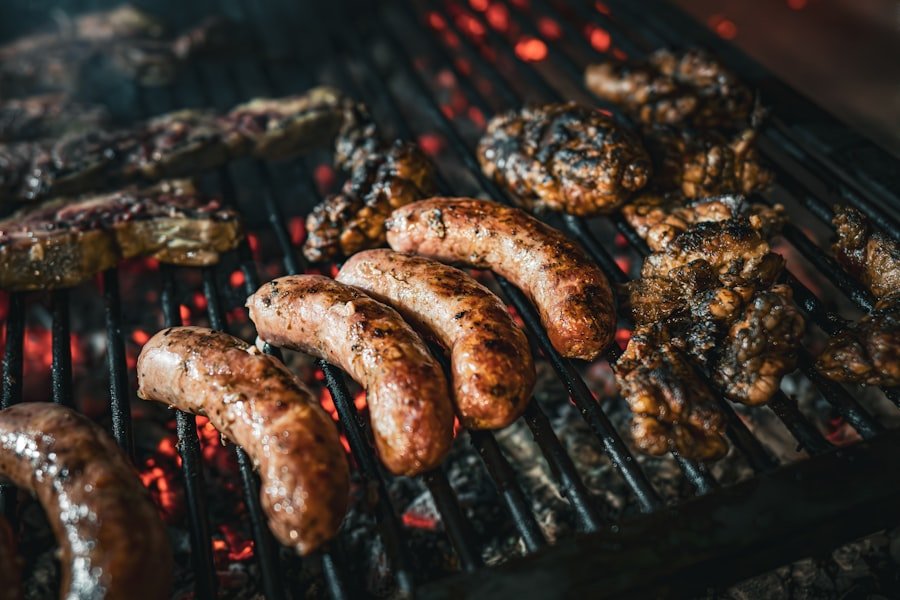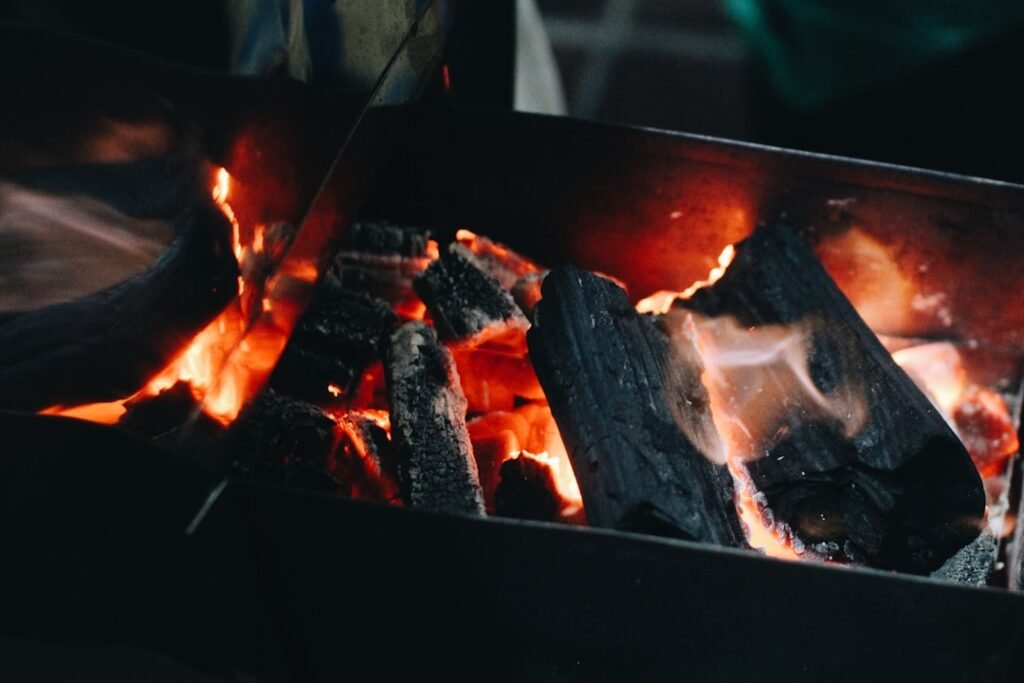Mastering BBQ: Techniques for Perfect Grilling

When it comes to grilling, the choice of meat can make or break the experience. I’ve learned that not all cuts are created equal, and understanding the characteristics of each can elevate my grilling game significantly. For instance, I often gravitate towards cuts like ribeye or sirloin for beef, as they offer a perfect balance of flavor and tenderness.
The marbling in these cuts ensures that they remain juicy even when cooked at high temperatures. On the other hand, I’ve found that tougher cuts, such as flank or skirt steak, can also be delicious when marinated properly and cooked quickly over high heat. Pork is another versatile option that I enjoy grilling.
Cuts like pork chops or tenderloin are fantastic choices, but I’ve discovered that shoulder cuts can yield incredible results when slow-cooked on the grill. Chicken is a staple in my grilling repertoire, and I often opt for bone-in, skin-on pieces for added flavor and moisture. The skin crisps up beautifully while the meat remains juicy, creating a delightful contrast.
Ultimately, I’ve realized that selecting the right cut of meat is about understanding its unique qualities and how they respond to different cooking methods.
Understanding Different Heat Levels
Grilling is not just about throwing meat on a hot surface; it’s an art that requires a keen understanding of heat levels. I’ve come to appreciate the importance of direct and indirect heat in achieving perfectly cooked dishes. Direct heat is ideal for searing meats and creating those beautiful grill marks that we all love.
When I want to cook something quickly, like burgers or steaks, I place them directly over the flames. This method allows for a quick caramelization of the exterior while locking in juices. Conversely, indirect heat is my go-to for larger cuts of meat or when I want to cook something low and slow.
For instance, when I’m grilling a whole chicken or a rack of ribs, I set up my grill for indirect cooking by placing the coals on one side and the meat on the other. This technique allows the meat to cook evenly without burning, resulting in tender and flavorful dishes. Understanding how to manipulate heat levels has transformed my grilling experience, allowing me to experiment with various techniques and achieve consistently delicious results.
Seasoning and Marinating Tips

Seasoning is a crucial step in the grilling process that I’ve learned to take seriously. A well-seasoned piece of meat can elevate its natural flavors and create a mouthwatering experience. I often start with a simple salt and pepper rub, allowing the meat’s inherent taste to shine through.
However, I’ve also discovered the power of more complex spice blends and marinades. For instance, a mixture of garlic powder, paprika, and cumin can add depth to chicken or pork, while a classic chimichurri sauce can bring a fresh burst of flavor to grilled steak. Marinating is another technique that I’ve found enhances both flavor and tenderness.
When I marinate meats, I aim for a balance of acidity, oil, and seasonings. The acid helps to break down tough fibers in the meat, making it more tender while infusing it with flavor. I often use ingredients like citrus juice or vinegar combined with olive oil and herbs for my marinades.
Allowing the meat to soak in these flavors for several hours or overnight has made a noticeable difference in my grilling results.
Perfecting the Art of the Sear
| Technique | Temperature | Time |
|---|---|---|
| Reverse Sear | 225°F – 275°F | 1-2 hours |
| Pan Sear | Medium-High Heat | 3-4 minutes per side |
| Grill Sear | High Heat | 2-3 minutes per side |
Searing is one of those techniques that can truly elevate my grilled dishes. The process involves cooking meat at high temperatures to create a flavorful crust while sealing in juices. I’ve learned that achieving the perfect sear requires patience and attention to detail.
First, I ensure that my grill is preheated adequately; this step is crucial because a hot grill will create those coveted grill marks and prevent sticking. Once the grill is ready, I place the meat on it without moving it for a few minutes. This allows for proper caramelization to occur.
After a few minutes, I give it a gentle turn to create crosshatch marks before flipping it over. The result is a beautifully seared piece of meat with an irresistible crust that locks in moisture. I’ve found that this technique works wonders not only for steaks but also for chicken breasts and pork chops, making them visually appealing and delicious.
Using Wood Chips for Flavor
One of my favorite ways to enhance the flavor of grilled meats is by using wood chips. The subtle smokiness they impart can take my grilling to another level. I typically soak the wood chips in water for about 30 minutes before using them; this helps them smolder rather than burn quickly on the grill.
Once they’re ready, I place them in a smoker box or wrap them in aluminum foil with holes poked in it to allow smoke to escape. Different types of wood chips offer unique flavors that can complement various meats. For instance, hickory provides a strong, bold flavor that pairs well with pork and beef, while applewood offers a milder sweetness that enhances chicken and fish beautifully.
Experimenting with different wood chips has become one of my favorite aspects of grilling; it allows me to customize flavors based on my preferences and those of my guests.
Mastering Temperature Control

Temperature control is perhaps one of the most critical aspects of successful grilling that I’ve come to master over time. Understanding how to maintain consistent temperatures on my grill has been key to achieving perfectly cooked meats. I often use an instant-read thermometer to check internal temperatures, ensuring that my meats are cooked safely while still being juicy and tender.
I’ve learned that different meats require different cooking temperatures; for example, chicken should reach an internal temperature of 165°F, while medium-rare steak should be around 130°F. By keeping an eye on these temperatures and adjusting my grill’s heat as needed—whether by moving coals around or adjusting vents—I can achieve consistent results every time I fire up the grill.
Grilling Vegetables and Fruits
While meats often steal the spotlight at barbecues, I’ve discovered that grilled vegetables and fruits can be just as delightful. Grilling vegetables brings out their natural sweetness and adds a smoky flavor that enhances their taste. I love tossing bell peppers, zucchini, and asparagus in olive oil and seasoning them with salt and pepper before placing them directly on the grill grates.
The charred edges create a wonderful contrast with their tender interiors. Fruits are another unexpected yet delicious addition to my grilling repertoire. Pineapple slices caramelize beautifully on the grill, creating a sweet treat that pairs wonderfully with savory dishes.
Watermelon is another favorite; when grilled, it takes on a smoky flavor that’s refreshing and unique. By incorporating vegetables and fruits into my grilling routine, I’ve been able to create well-rounded meals that please both meat lovers and vegetarians alike.
Tips for Achieving the Perfect BBQ Sauce
No barbecue experience is complete without a delicious sauce to accompany grilled meats. Over time, I’ve experimented with various recipes and techniques to create my perfect BBQ sauce. One key tip I’ve learned is to balance flavors—sweetness from brown sugar or honey should be complemented by acidity from vinegar or citrus juice.
This balance creates a sauce that enhances rather than overwhelms the flavors of the meat. I also enjoy making my BBQ sauce from scratch; it allows me to customize ingredients based on my preferences. Adding ingredients like smoked paprika or chipotle can introduce an exciting depth of flavor, while fresh herbs can brighten up the sauce beautifully.
Once I’ve perfected my sauce, I make sure to apply it during the last few minutes of grilling; this prevents burning while allowing the flavors to meld perfectly with the meat. In conclusion, mastering the art of grilling involves understanding various techniques—from choosing the right cuts of meat to perfecting temperature control and creating delicious sauces. Each aspect contributes to an enjoyable grilling experience that not only satisfies my taste buds but also brings friends and family together around the fire.
As I continue to explore new flavors and techniques, I look forward to many more memorable grilling adventures ahead.





